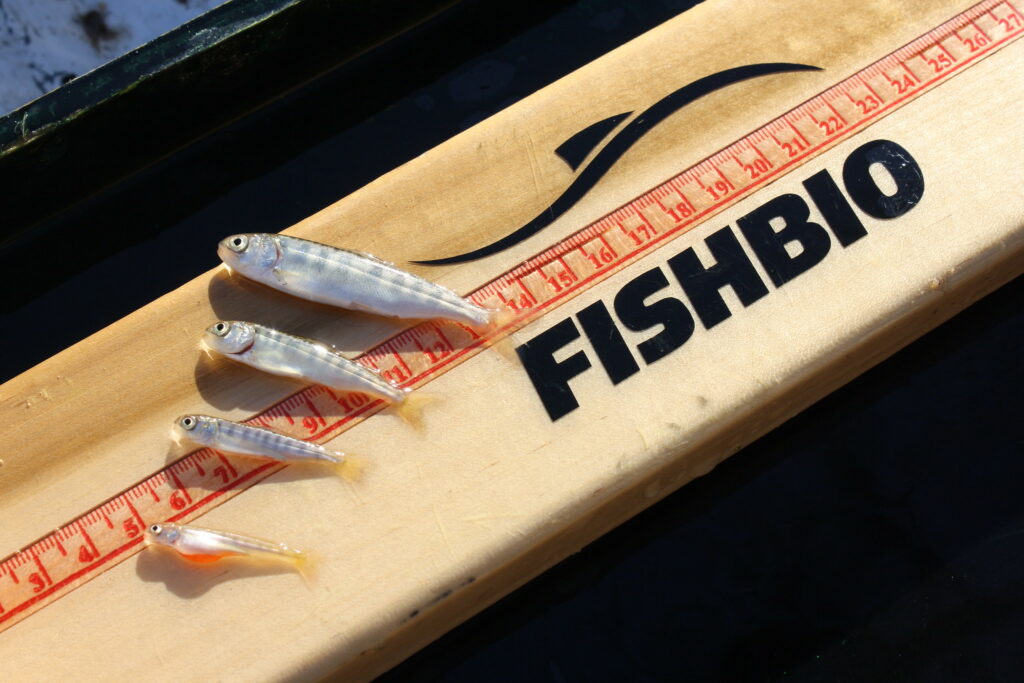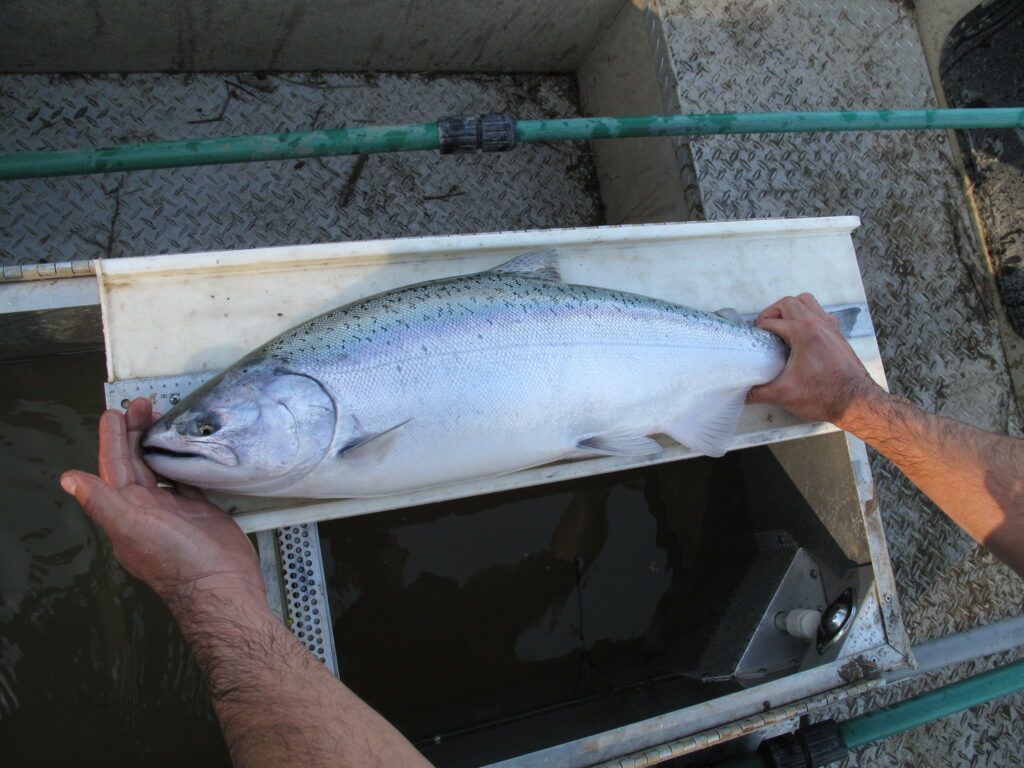Monday May 16, 2022

Rare traits and behaviors within a population often get less attention, but might sometimes be the perfect ingredient to ensure the survival of a species in the face of threats like climate change. A recent article published in the journal Nature revealed the surprising success of a rare life-history strategy for threatened spring-run Chinook salmon. Juveniles that spent the summer in cool, high-elevation habitat and migrated in the fall rather than the spring were found to be crucial to the success of the population, especially in years experiencing stressful environmental conditions. A team of researchers investigated migration patterns of spring-run Chinook salmon from Deer and Mill creeks in the Sacramento Basin of the Central Valley to understand how variations in timing could contribute to climate change resilience (Cordoleani et al. 2021). Their findings revealed that 60% of successfully returning adults on average across years had out-migrated late in the fall as juveniles, even though these late migrators only comprised 10% of out-migrating juveniles overall. Importantly, this strategy was found to be most successful during years of drought and ocean heatwaves, demonstrating how diversity within a population can promote resilience by creating a buffer against natural and human-caused disturbances. However, late-migrating juveniles require cool water temperatures to survive in rivers during the summer heat, indicating that trying to keep river refuges cool during the summer may be critical to the persistence of this threatened species.
To reconstruct the life histories of spring-run Chinook salmon in Deer and Mill creeks, the researchers investigated rotary screw trap data of outmigrating juvenile salmon from the years 1995–2010. They also analyzed the chemical composition of otoliths (ear bones) from 123 carcasses of adult salmon that spawned in these watersheds from the years 2007–2018. Through their analysis, the team was able to reconstruct juvenile emigration patterns as well as the growth rates of the 123 adults, and investigate how the different juvenile migration strategies contributed to the reproductive population. Three distinct juvenile life-history types were identified: early, intermediate, and late migrants. Early migrants left their natal streams after only 15 days on average, and continued rearing for multiple months in the Sacramento River and Delta. Despite beginning their migration at significantly smaller sizes than intermediate migrants, which reared in their natal streams for an average of 84 days, the early migrants were found to be similar in size and age to intermediates by the time they entered the ocean.

Late migrants emigrated to the ocean much later and at larger sizes than the early and intermediate migrants, having spent an average of 194 days rearing in freshwater over the spring and summer. The different environmental conditions these late migrants experienced when traveling and arriving to the ocean potentially contributed to improved feeding, growth, and survival opportunities. While the late migrants only composed 10% of the overall monitored population, they made up more than half (60%) of the adults that successfully returned to spawn. In contrast, early migrants were the dominant life-history type observed in the juvenile monitoring, but only represented 21% of returning adults. Notably, during years of drought or ocean heatwaves, late migrants were essentially the only migration strategy that survived to adulthood. Waiting for river temperatures to cool down before migrating appears to be a drought-resilient strategy.
As salmon face ever-increasing environmental and human-caused stressors, variability in factors such as run timing, spawning location, or outmigration strategy can help ensure that their populations persist in a warming climate. Salmon populations in California are at the southern end of their species range, where they face the combined stressors of warming temperatures and habitat loss. The newly discovered success of the late-migrating life-history strategy may provide a form of “life support” for threatened spring-run Chinook salmon as they navigate through increasingly adverse conditions. However, the late-migrating strategy of leaving rivers in the fall when temperatures are cooler means that the juvenile salmon must be able to survive the heat of the spring and summer. Mill and Deer Creek watersheds are among the few places in California where spring-run can still access cool upstream reaches during the summer, and climate change threatens to shrink the amount to suitable summer habitat by more than half by 2080. The study authors suggest that conservation efforts such as habitat restoration to improve access to cold water refuges, targeted temperature management of water below dams, and potentially providing access to high-elevation habitats above dams may be needed to support this rare, drought-resilient life history type.
This post was featured in our weekly e-newsletter, the Fish Report. You can subscribe to the Fish Report here.
